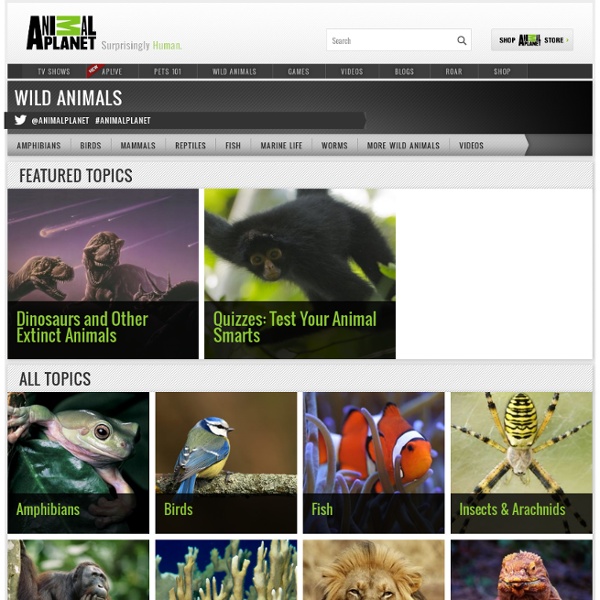



http://www.animalplanet.com/wild-animals
Animals As of July 1, 2013 ThinkQuest has been discontinued. We would like to thank everyone for being a part of the ThinkQuest global community: Students - For your limitless creativity and innovation, which inspires us all. Teachers - For your passion in guiding students on their quest. Partners - For your unwavering support and evangelism.
NetVet Veterinary Resources / Electronic Zoo Animal Species Text and Non-Netscape Browsers, [Start Here] Select a Species from the Pick List, the Image Map above, or the Menu below. Return to: Food Chain - Kid's Corner The Food Chain Every living thing needs energy in order to live. Everytime animals do something (run, jump) they use energy to do so. Animals get energy from the food they eat, and all living things get energy from food. Teach the Children Well-Animals AdaptationAdaptations to A Desert BiomeAnimal AdaptationsAnimal Adaptations and SurvivalAnimal Adaptations GameAnimal Adaptations E-SafarisAnimal CamouflageAnimal DiversityAnimals and AdaptationAnimals, Adaptation and the Galápagos IslandsThe Body ChangersBuild a BeastCamouflageDirtmeister's Animal AdaptationsEvolutionHot or ColdHow Animals Meet Their NeedsHow Plants and Animals Survive the WinterMimicryPenguin AdaptationUnderstand Wildlife Winter Survival StrategiesWacky Animal DefencesWhat Do Animals Do in Winter?What Does Adaptation Mean?Wildlife in Winter--Adaptations for SurvivalWinter Adaptations of Animals
Camoflauge in Animals Mimicry Some animals and plants look like other things -- they mimic them. Mimicry is another type of deceptive coloration. Rainforest Animals Wildlife & Nature Videos